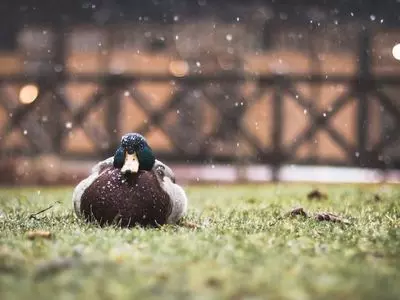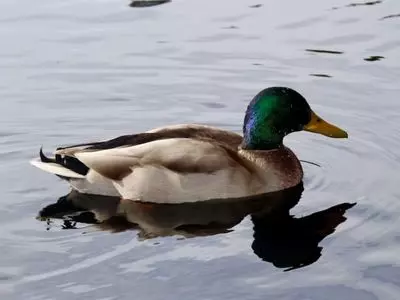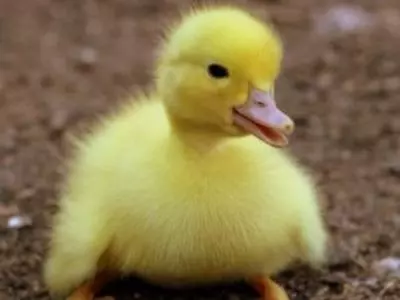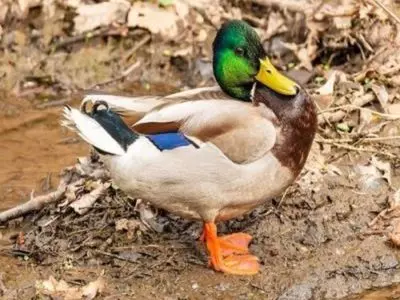No products in the cart.
Ducks
What is a Male Duck Called? – FUN FACTS
Ducks, chickens, and many other birds have different names depending on their sex, age, and even based on whether you’re referring to an individual bird or a group of birds.
So, what is a male duck called?
The male duck is called a drake. When a male duck is young, it’s called a duckling, but once it reaches adulthood, it’s commonly referred to as a drake. Male ducks are generally easy to identify from females due to their more colorful feathers and larger size.
In this article, we will be exploring more in-depth information on ducks, and the drake in particular.
*This post may have affiliate links, which means I may receive commissions if you choose to purchase through links I provide (at no extra cost to you). As an Amazon Associate I earn from qualifying purchases. Please read my disclaimer for additional details.
The Term for Male Ducks

Sure you can just call a male duck a “duck” but there are more technical terms that can be used to refer to a duck based on their age and sex.
Drake
The term “drake” is commonly used to refer to male ducks while adult female ducks may be referred to as hens or just plain old ducks.
Duckling
A baby duck of either sex is called a duckling, but only male ducks grow up to be drakes.
The noticeable transformation usually occurs between 3 and 5 months old, though some males develop faster than others.
For instance, young mallard drakes mature more quickly than other species.
Read More: What is a Group of Ducks Called? Interested in learning more about duck terms? Here’s what a group of ducks is called!
Difference Between Male Drake & Female Duck

Hens and drakes have some noticeable differences in appearance. You should be conscious of these variations if you want to raise ducks.
The following are the differences between the male and female duck:
Plumage
The plumage is the most conspicuous way to tell hens and drakes apart.
Male ducks stand out because of their brilliant patterns and colors, which help them attract females during mating season.
Every year after the mating season, drakes molt and lose their vibrant feathers, though they eventually grow them back.
Hens can generally be distinguished from drakes by their more subdued colors, which help to camouflage them.
Color of the Bill
A drake’s beak is either bright yellow or green, while a hen’s beak will be either orange or brown.
Depending on the duck species, some hens’ beaks may have dark splotches.
Size
Drakes of all duck species are considerably larger than the females.
This is true for both their body and head size. Moreover, drakes have necks that are much more robust compared to those of hens.
Finally, their wing span is also noticeably greater.
Feathers
Drakes are easily recognized because of their unique feathers. Drakes have a tuft of curled feathers at the bottom of their tails.
The “sex feathers,” as they’re known, develop between 3 and 5 months in males.
Hens, on the other hand, don’t have any ruffled feathering near the base of their tails.
Read More: How Long Do Ducks Live? We explore the average lifespan of domesticated and wild ducks!
Quacks
Hens and drakes have different sounding quacks.
Drake’s quacks are generally quite gentle while a hen’s quacks are much harsher and louder. Around a month old, you can usually tell hens from drakes by their quacks.
This difference remains constant throughout most duck breeds, as well.
For example, Muscovy duck males have a low throaty quack while the females have a higher pitch quack that sounds like crackling.
Here’s a video showing the difference between male and female ducks:
How to Tell if a Duckling is a Drake

Determining the sex of a duckling at an early age might be tough. However, there are methods to tell whether a duckling is male or female.
The following are some indicators that may help determine if your duckling is a drake or a hen:
Feathers
There is a difference between drake and hen ducklings in their feathers.
It isn’t an immediate difference, but a few months after hatching, young males will start to develop sex feathers.
The duckling’s feather development won’t stop until it matures into adulthood.
The Bill
By checking the color of its bill, you can tell if a duckling is male or female.
Males have yellow bills, while females may be any range of colors, including orange and brown.
For example, young female Mallards have brown bills.
Size of a Duckling
A helpful way to identify whether a duckling is male or female is its size.
More often than not, males will be larger in size than females.
So, if your new little friend seems disproportionately large compared to the rest of the flock, there’s a good chance it’s a boy!
Sound
The quack of a duckling may reveal its gender. Male ducklings’ quacks are shriller than females’.
As the duckling matures into a drake, the sound changes and becomes smoother. After about a month, male ducklings will begin to use softer tones when they quack.
Behavior
The personality of a duckling can help predict whether it will become a male or female as an adult.
Male ducks typically display more dominant behavior from when they are young until they reach sexual maturity.
Some species of ducks exhibit particularly violent behavior at this time.
Thinking of hatching your own ducklings? Check out these Best Duck Egg Incubator options – tested and reviewed!
Conclusion
By now, you should know what male ducks are called, how to tell if a duck is a drake and the differences between a male and female duck!
We hope this guide has been helpful!

